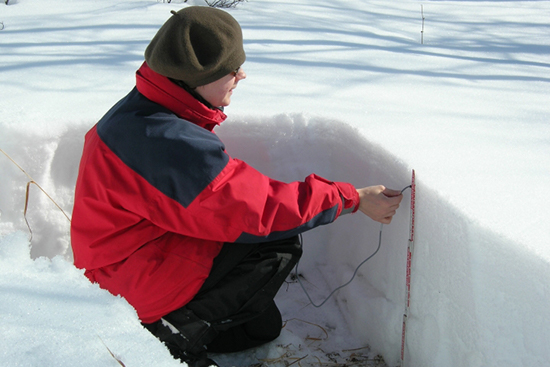The future of snow mirrors the future of the Arctic flora and fauna, the future of livelihoods as well as people in the Arctic. And what is snow that has never fallen from the sky?
Snow and ice have protected our planet for thousands of years. Snow and ice cover effectively reflect solar radiation back to space. They have high reflectivity or albedo. As a result of climate change, snow and ice melt. The Earth’s cooling system is changing.
For more than twenty years, Sirpa Rasmus has studied the structure of snow and the ways natural phenomena affect livelihoods, such as reindeer husbandry.
Rasmus, 45, is a geophysicist and researcher in the Global Change Research Group of the Arctic Centre at the University of Lapland. She lives in Jyväskylä.
Geophysics examines earthquakes, avalanches, water quality in lakes. It is also needed to assess the effects of climate change.
– Geophysics is fascinating because it uses the tools of physics, but examines tangible and visible things, Rasmus says.
Rasmus has done a lot of fieldwork, digging holes in the snow, taking samples, and also analysing the structure of snow using computer modelling. In the field, the most important tools of the snow scientist are shovel, sampling probe, balance, and thermometer.
– The snow is also extensively studied in the northern polar regions and Antarctica. The expeditions are longer, but the methods are similar to those used anywhere else.
A researcher’s work is often lonely but rewarding. When you examine a snow pit, you notice many things.
– The snow in the bottom layers of the snow is called sugar snow or depth hoar. It was only quite late in my career that I learned that it had never fallen from the sky, but that the crystals formed under the snow cover.

Snow measurements in Kilpisjärvi. Photo: Sirpa Rasmus's homealbum
In northern livelihoods, such as agriculture, forestry and reindeer husbandry, snow affects everything. Rasmus explores how reindeer husbandry adapts to climate change.
Reindeer herders are very interested in snow modelling and satellite data. They also dig snow pits and make a lot of other snow observations in their own work. Researchers and reindeer herders are actively exchanging ideas.
– When we talk about snow, we are conducting a debate of equals.
The geophysicists are puzzled by the big questions: How does climate change affect snow? Will there be snowy winters in the future?
Many of Rasmus’s colleagues come from Canada, Switzerland, the United States, France, or Japan. They are countries with many avalanches and perhaps as a result they have many researchers specialising in the structure of snow.
– Snow cover can be very different depending on the year. Last year was an enlightening example in Finland. Although the winter was warm, there was more snow in the north than usual.
– In the Global Change Research Group, we think that everything affects everything, and it is not possible to consider the phenomena from the point of view of natural sciences only, Rasmus says. Her long-standing colleagues include Professor Bruce Forbes and biologist Minna Turunen.
There are currently large international projects Rasmus is working on, researching the economic life of Northern Fennoscandia and the Jamal region and the effects of climate change. She does part of her work as a researcher for the University of Helsinki.
Rasmus is also studying the ice layers that form in the snow in a research project funded by the National Science Foundation of the United States.
In the future, Rasmus wants to explore snow patches around Halti in the Käsivarsi Wilderness area – the snow in the patches can be more than ten years old.
Text: Johannes Roviomaa
Photos: Johannes Roviomaa and Sirpa Rasmus's home album